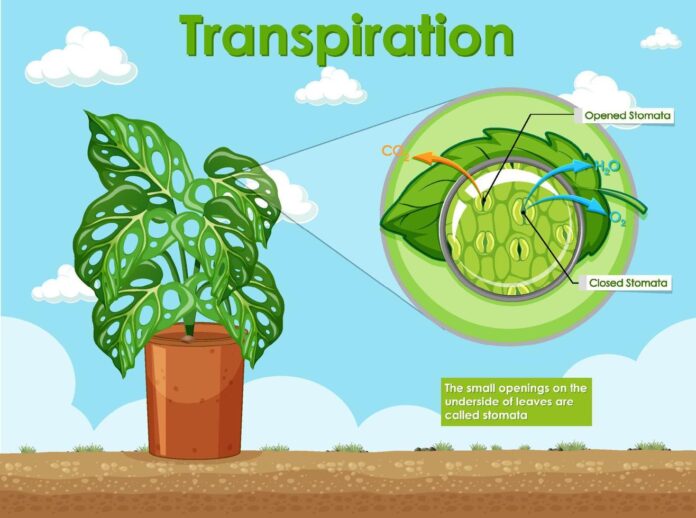Why transpiration is called a necessary evil?
Transpiration is the term for the loss of water from a plant’s aerial portions as water vapor. Since transpiration is an unavoidable yet potentially destructive process, it is often referred to as a necessary evil.
Loss of water from the plant results wilting, serious desiccation and often death of a plant if a condition of drought is experienced. There is substantial evidence that even minor water stress causes crops to experience economic losses due to decreased yield and slower growth rates. Thus transpiration is described as necessary evil because it is an inevitable process but potentially harmful.
The stomata are primarily used to absorb CO2, but they also aid in gas exchange and allow water vapor to escape from the plant.
Transpiration is also very important for the plant, despite seeming inevitable.
- Because of transpiration pull, most tall plants conduct water. The transpiration stream spreads minerals dissolved in water throughout the body of the plant.
- The cooling effect of water evaporation from exposed leaf cell surfaces on plants.
- Transpiration indirectly influences the processes of respiration and photosynthesis due to the wet surface of the leaf cells.
Transpiration is supposed to help the plant in the following ways.
- Too much water inside the plant could cause the cells to deteriorate. Transpiration stops it by expelling the surplus water.
- Retaining additional water would disrupt the osmotic balance between cells. Transpiration prevents this from happening.
- The distribution of nutrients to every area of the plant body is aided by transpiration stream.
- All regions of the plant’s body receive fresh, cool water, which serves as a cooler and decreases metabolic heat.
- Salts enter the plant along with water, transpiration indirectly aids in the absorption of salts.
- The suction force produced by transpiration is the cause of the upward movement of water (ascent of sap).
However, several recent studies have suggested that transpiration may not actually be as beneficial as once believed. The anatomical design of the leaf has an impact on the fact that water escapes. The anatomy of the leaf is essential for respiration and photosynthesis. Water escapes when there is a path of escape. Excess water is not expelled through transpiration. Due to the fact that most of the water will be lost through transpiration, the plants are actually pushed to absorb more of it. That is why transpiration is often called a necessary evil.

